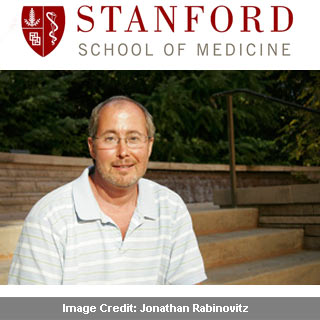
This study is known to be based on experiments in cell culture and in mice. Also, this study is believed to have identified for the foremost time, the biochemical mechanism by which the commonly prescribed drug gabapentin functions. This drug, gabapentin is known to be marketed under the trade name Neurontin.
“We have solved the longstanding mystery of how this blockbuster drug acts,†says Ben Barres, MD, PhD, professor and chair of neurobiology.
Moreover, the study shows that gabapentin may stop the formation of latest synapses, perhaps elucidating its therapeutic value in justifying epileptic seizures and chronic pain. However, this insight may lead physicians to re-evaluate the circumstances in which the drug should be given to expecting women.
Supposedly, this study examines the interaction between neurons and astrocytes. Neurons seem to be the widely researched nerve cells which account for nearly 10 percent of the cells inside the brain, whereas astrocytes appear to be the less-studied but much more ordinary brain cells.
It was noted that a large amount of study has been made on how neurons transmit electrical signals to each other via synapses i.e. the nanoscale electrochemical contact points between neurons. Apparently, it is the brain’s circuitry of about 100 trillion of these synapses which allow us to think, feel, remember and move.
It is usually agreed that the precise placement and strength of each person’s trillions of synaptic connections seems to closely record with that person’s cognitive, emotional and behavioral structure.
However, why a particular synapse appears to be formed in a definite place at a certain time has basically remained unknown. In 2005, Barres was observed to have taken a huge step toward elucidating this process when he and his colleagues discovered that a protein astrocytes secrete is crucial to the formation of this complex brain circuitry. The protein astrocyte is also called as thrombospondin.
Yet, no one knew the exact mechanism by which thrombospondin may have encouraged synapse formation. In this latest study, Barres, lead author, Cagla Eroglu, PhD, along with their colleagues demonstrated how thrombospondin appears to join to a receptor found on neurons’ outer membranes.
The role of this receptor, known as alpha2delta-1, seems to have been unclear until now. But in an experiment with mice, the scientists discovered that neurons lacking alpha2delta-1 appear to have been unable to form synapses in response to thrombospondin stimulation.
Furthermore, the experts grew neurons in a dish that were bioengineered to overexpress this receptor. They found that those neurons were believed to have produced twice as many synapses in return to stimulation with thrombospondin in contrast to their unmodified counterparts.
The novel discovery about alpha2delta-1’s key role in synapse formation seems to carry vital implications for understanding the cause of pain and of epilepsy. In addition to developing enhanced medicines for these conditions.
It was previously known that alpha2delta-1 is the neuronal receptor for gabapentin, one of the worlds most extensively administered medicines. Gabapentin is believed to be often prescribed for epilepsy and chronic pain. Also, its off-label use for other indications seems to be widespread.
Until now, the molecular mechanism of gabapentin’s action i.e. what, exactly, it’s doing to counter seizures or chronic pain appears to be unknown. However both syndromes may possibly involve excessive numbers of synaptic connections in local areas of the brain.
The findings of the study revealed that when gabapentin was administered in developing mice, it seems to have bounded to alpha2delta-1. This may have prevented thrombospondin from binding to the receptor and, in turn, impeding synapse formation. Similarly, by blocking thrombosponin, gabapentin may be able to decrease excess synapse formation in susceptible areas of the human brain.
The findings further revealed that gabapentin fails to dissolve pre-existing synapses, but only prevents formation of novel ones. Allegedly, that significantly diminishes gabapentin’s possible danger to adults.
In mature human brains, astrocytes usually are known to produce very little thrombospondin. Also, adult neurons don’t form many novel synapses, though some new synapses seem to continue to be formed all through life. For instance, in a part of the brain where new memories are set down and at sites of injury to neurons, such as it happens after a stroke.
Nevertheless, the new findings could raise questions about gabapentin’s effect in situations where synapse formation is widespread and crucial. Apparently, this is most notably seen in pregnancies.
The huge bulk of the brain’s synapses are believed to be formed during gestation and the very early months and years after birth. Since gabapentin easily crosses the placental barrier, it could probably hinder with a fetus’ rapidly developing brain just when global synapse formation is proceeding at rapid speed.
Barres further said that, “It’s a bit scary that a drug that can so powerfully block synapse formation is being used in pregnant women. This potential effect on fetal brains needs to be taken seriously. Right now, doctors have the view that gabapentin is the safest anticonvulsant. There is no question that pregnant women with epilepsy who have been advised by their neurologists to continue their anticonvulsant treatment with gabapentin during their pregnancy should definitely remain on this drug until instructed otherwise. But there is no long-term registry being kept to track gabapentin-exposed babies.
“Our findings are saying that we need to be following up on these newborns so that their cognitive performance can be studied as they grow older,†continues Barres.
Apparently, this discovery could advance scientists’ understanding of how young children’s brains develop in addition to assist in pointing out novel approaches toward defying brain disorders in adults.
The findings of the study have been published in the journal, Cell.
